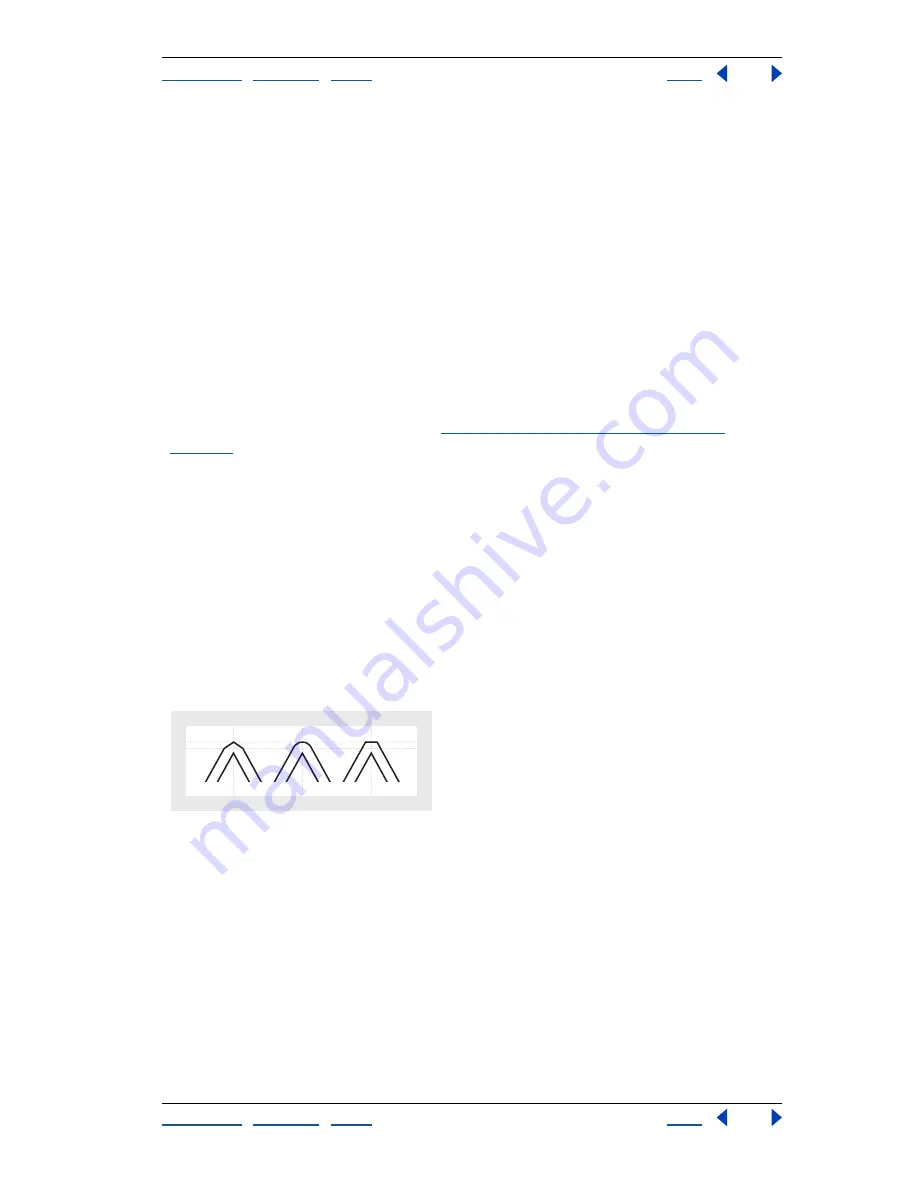
Using Help
|
Contents
|
Index
Back
332
Adobe InDesign Help
Trapping Color
Using Help
|
Contents
|
Index
Back
332
Setting trap widths
Differences in paper characteristics, screen rulings, and printing press conditions require
different amounts of trap. Each Trap Width control allows a maximum value of 8 points.
In practice, however, this value can be used only by Adobe In-RIP Trapping. If built-in
trapping is used, any amount over 4 points is clipped to 4 points. To determine the appro-
priate trap widths for each job, consult with your commercial printer. Trap styles provide
two different settings for trap width (the amount of overlap for each trap):
Default
Specifies the trap width in points for trapping all colors except those involving
solid black. Enter values from 0p0 to 0p8. The default value is 0p0.25.
Black
Indicates the distance that inks spread into solid black, or the
holdback amount
—
the distance between black edges and underlying inks for trapping rich blacks. The default
value is 0p0.5. This value is often set to be 1.5 to 2 times the value of the default trap width.
The value you set for Black Color determines what InDesign will consider to be a solid
black or a
rich black
(a process color consisting of solid black with one or more compo-
nents of C, M, or Y inks). For details, see
“Trapping with blacks and rich blacks” on
page 335
.
Note:
If you choose Application Built-In trapping, and you specify a Default trap width
or Black width larger than four points, the resulting trap width is limited to four points.
However, the value you specified will continue to be displayed, because if you switch to
Adobe In-RIP Trapping, traps larger than one point are applied as you specified.
Setting trap appearance
A join is where two trap edges meet at a common end point. You can control the shape of
the outside join of two trap segments and the intersection of three traps. The Trap
Appearance section in the Trap Style dialog box has two options:
Join Style
Controls the shape of the outside join of two trap segments. Choose from
Miter, Round, and Bevel. The default is Miter, which matches earlier trapping results to
retain compatibility with previous versions of the Adobe Trapping Engine.
Trap join examples, left to right: miter join, round join, bevel join






























